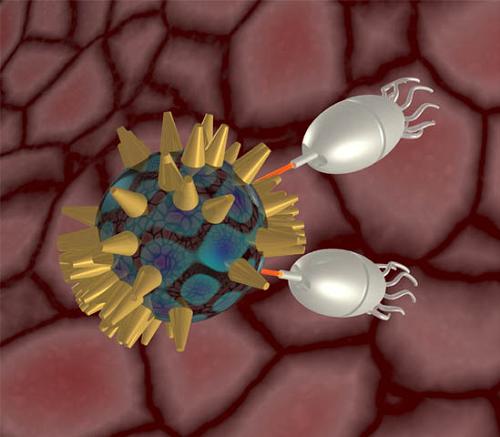Technological forecasting in the information age has a unique status. The profession, which was born as a need for countries to plan long-term infrastructures, has become a first-rate tool for transferring ideas and mutual fertilization, to the extent that it is a marketing tool in the hands of those who benefit from technological changes: the computer, software and infrastructure manufacturers
Roni Lipshitz, 2/2/2000

In this case, the forecasters, usually the leaders of the giant companies, know how to create demand for new products, and subsequently satisfy that demand. But at the same time, in additional channels, a different, long-term, and sometimes incredibly accurate prediction operation is made.
One of the most famous forecasters is Ray Kurzweil, the inventor of the "Kurzweil Keyboard", which converts written text into speech for use by the blind. Kurzwill, a graduate of the Massachusetts Institute of Technology in computer engineering and creative writing, recently released a book, "Spiritual Machines The Age of", in which he details some of his bold predictions.
The online encyclopedia Britannica published a special interview with him, in which she tried to wonder about the pot of predictions. Kurzweil claims that his predictions are incredibly accurate because they are based on mathematical models. "In the early 80s I predicted that in '98 the computer would take the world chess championship. I was wrong only in one year."
Britannica: One of your dramatic predictions is that in the second half of the 21st century we will be able to scan a person's brain, and copy it into a computer.
"They ask me how we can perform a scan with such a high resolution. That's why I came up with the idea that the scan can be performed from within the brain. Already today we have scanners with a very high resolution, but how can you wander with the scanner inside the brain without destroying it? The answer is to send the scanners as nanobots, robots the size of blood cells equipped with tiny scanners that can reach all corners of the brain. They will be linked via a wireless local communication network and will use distributed processing technology. In other words, the computing capabilities of the nanobots will be combined into one complete parallel computer."
Can it be done today?
"This is possible from every aspect, except for the price and size. However, this is where what I call the 'Acceleration Law' comes into play: there are technological acceleration processes that exponentially decrease the processing price. From this aspect, the price will be reasonable within 30-25 years. At the same time, miniaturization is also an exponential process. We are now at a stage where technology is shrinking by multiples of 5.6 per decade. That is, nanobot scanners will be possible within 30 years.
"Creating smaller and smaller smart machines is an economic necessity. Sometimes people claim that we might reach a point where we decide not to make these computers anymore because they threaten us, but this is an unrealistic assumption. To stop the process, we must abolish economic competition, capitalism and free enterprise. Every time someone makes a machine that's a little bit smarter, they take over the market. There are tens of thousands of projects being pushed forward by the competitive forces of the market. This is not a centralized decision, from above." You developed a mathematical model that claims that the development of technology is part of evolution.
"You have to think about the development of life on Earth. It took billions of years for the first cells to form. In the Cambrian era, there was a sharp shift, and within a few tens of millions of years animals were created. Later, it took several million years for mammals to evolve into apes, and several hundreds of thousands of years for modern humans to appear. After that, the rate of progress was too fast for controlled processes, DNA and evolution went into phase
the technological. I mean, for me, technology is the direct continuation of evolution. It is a kind of spiritual search. It produces beings that are smarter, more creative, more beautiful and more loving."
{Appeared in Haaretz newspaper, 20/2/2000{
Nanotechnology connoisseur
They know nanobots
https://www.hayadan.org.il/BuildaGate4/general2/data_card.php?Cat=~~~302157403~~~207&SiteName=hayadan
